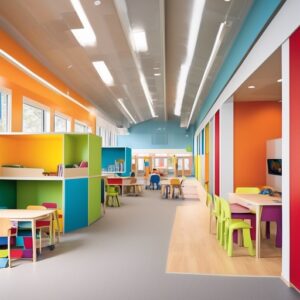In recent years, the demand for modular school buildings has surged due to their flexibility, cost-effectiveness, and sustainability. As more educational institutions opt for modular structures to accommodate growing student populations or address infrastructure needs, the importance of an effective online presence becomes paramount. A well-designed website can serve as a powerful tool for showcasing available modular school buildings and attracting potential buyers. In this article, we’ll discuss five essential tips for building a website around modular school buildings for sale.
Understand Your Audience and Their Needs
Before diving into the design process, it’s crucial to understand the target audience for your modular school buildings. Are you primarily catering to public schools, private institutions, or both? What are their specific requirements and preferences when it comes to modular construction? Conducting thorough market research and engaging with potential buyers can provide valuable insights into their needs, preferences, and pain points.
Once you have a clear understanding of your audience, tailor your website’s content, design, and features to cater to their needs effectively. For example, if energy efficiency is a top priority for your audience, highlight the sustainable features of your modular buildings prominently on the website. By addressing their concerns and showcasing how your modular school buildings meet their requirements, you can significantly enhance the effectiveness of your website.
Showcase the Benefits of Modular Construction
Modular construction offers numerous benefits over traditional building methods, including cost savings, shorter construction timelines, and flexibility in design. Your website should highlight these advantages prominently to educate potential buyers and differentiate your modular school buildings from conventional options.
Incorporate compelling visuals, case studies, and testimonials to illustrate the benefits of modular construction in real-world scenarios. Use before-and-after photos to showcase successful projects and emphasize how modular buildings have helped educational institutions overcome their space constraints or budget limitations. By effectively communicating the advantages of modular construction, you can instill confidence in potential buyers and encourage them to explore further.
Prioritize Visual Appeal and User Experience
The design of your website plays a crucial role in capturing visitors’ attention and encouraging them to explore further. Opt for a clean, modern design that reflects the professionalism and quality of your modular school buildings. Use high-resolution images and videos to showcase different types of modular structures, interior layouts, and customization options.
Ensure that your website is mobile-friendly and optimized for seamless navigation across various devices and screen sizes. Incorporate intuitive navigation menus, clear calls-to-action, and informative content to guide visitors through the buying process. Additionally, consider implementing interactive features such as virtual tours or 3D renderings to provide an immersive experience for potential buyers.
Provide Comprehensive Information and Resources
Transparency and accessibility are key factors in building trust with potential buyers. Provide comprehensive information about your modular school buildings, including specifications, floor plans, pricing options, and financing solutions. Be transparent about any limitations or considerations associated with modular construction, such as permitting requirements or transportation logistics.
In addition to basic information, offer valuable resources and educational content to assist buyers in their decision-making process. Publish blog posts, whitepapers, or case studies that delve into topics related to modular construction, sustainability, and educational facility planning. By positioning your website as a valuable source of information and expertise, you can establish credibility and attract qualified leads.
Implement Effective Marketing and Lead Generation Strategies
Building a great website is only the first step; you also need to drive traffic and convert visitors into leads. Implement digital marketing strategies such as search engine optimization (SEO), pay-per-click advertising, and social media marketing to increase visibility and attract targeted traffic to your website. Leverage email marketing campaigns and lead magnets such as downloadable brochures or guides to capture contact information and nurture leads over time.
Track and analyze website metrics such as traffic sources, user engagement, and conversion rates to identify areas for improvement and optimize your marketing efforts continuously. By refining your approach based on data-driven insights, you can maximize the effectiveness of your website in generating leads and driving sales.
Conclusion
In the competitive market for modular school buildings for sale, a well-designed website can serve as a powerful asset for showcasing your offerings and attracting potential buyers. By understanding your audience’s needs, highlighting the benefits of modular construction, prioritizing visual appeal and user experience, providing comprehensive information and resources, and implementing effective marketing strategies, you can create a compelling online presence that drives results. By following these five essential tips, you can maximize the impact of your website and position your modular school buildings for success in the market.

